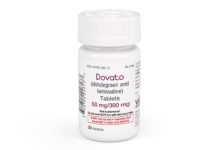Spending on HIV/AIDS globally between 2000 and 2015 totaled more than half a trillion dollars, according to a new scientific study, the first comprehensive analysis of funding for the disease.
The total was $562.6 billion over the 16-year period. Annual spending peaked in 2013 with $49.7 billion. Two years later, $48.9 billion was provided for the care, treatment, and prevention of the disease.
“This research is an important initial step toward global disease-specific resource tracking, which makes new, policy-relevant analyses possible, including understanding the drivers of health spending growth,” said Dr. Christopher Murray, director of the Institute for Health Metrics and Evaluation (IHME) at the University of Washington. “We are quantifying spending gaps and evaluating the impact of expenditures.”
Globally, governments were the largest source of spending on HIV/AIDS in 2015, contributing $29.8 billion or 61 percent of total spending on HIV/AIDS. Prepaid private spending was the smallest, making up only $1.4 billion of the 2015 total.
Development assistance for health (DAH), funding from high-income nations to support health efforts in lower-income ones, made up 0.5 percent of total health spending globally in 2015; DAH totaled 30 percent of all HIV/AIDS spending in 2015. Consider:
- Not only does sub-Saharan Africa have the largest HIV-positive population (24.4 million in 2015), it also depends most substantially on DAH: 64 percent of HIV/AIDS spending in the region is DAH.
- South Asia also has a high level of dependence on donor financing, with DAH making up 45 percent of spending on HIV/AIDS.
“Reliance on development assistance to fight HIV/AIDS in high-prevalence countries leaves them susceptible to fluctuations in the external resources available for HIV/AIDS,” said IHME’s Dr. Joseph Dieleman, lead author of the study. “Nations’ HIV/AIDS programs are at risk for gaps in support and unrealized investment opportunities.”
Overall health spending worldwide, which totaled $9.7 trillion in 2015, Dieleman said, continues to rise and outpaces economic growth in many countries, although 66 percent of this spending was in high-income countries. Low-income countries, which together make up 8.8 percent of the global population, represent less than 1 percent of health spending globally. Spending per capita in 2015 varied widely across countries, spanning from $28 per capita per year on health (Central African Republic) to nearly $10,000 (United States).
“With growth steady or accelerating, it is more important than ever to understand where resources for health go and how they align with health needs,” he said.
The study, “Spending on health and HIV/AIDS: domestic health spending and development assistance in 188 countries, 1995-2015,” was published today in the international medical journal The Lancet. Dieleman, Murray, and IHME researchers worked with the organization’s health financing collaborative network, a group of 256 researchers in 63 countries.


 ПОИСК ПО САЙТУ
ПОИСК ПО САЙТУ  поиск по ресурсному центру
поиск по ресурсному центру 



